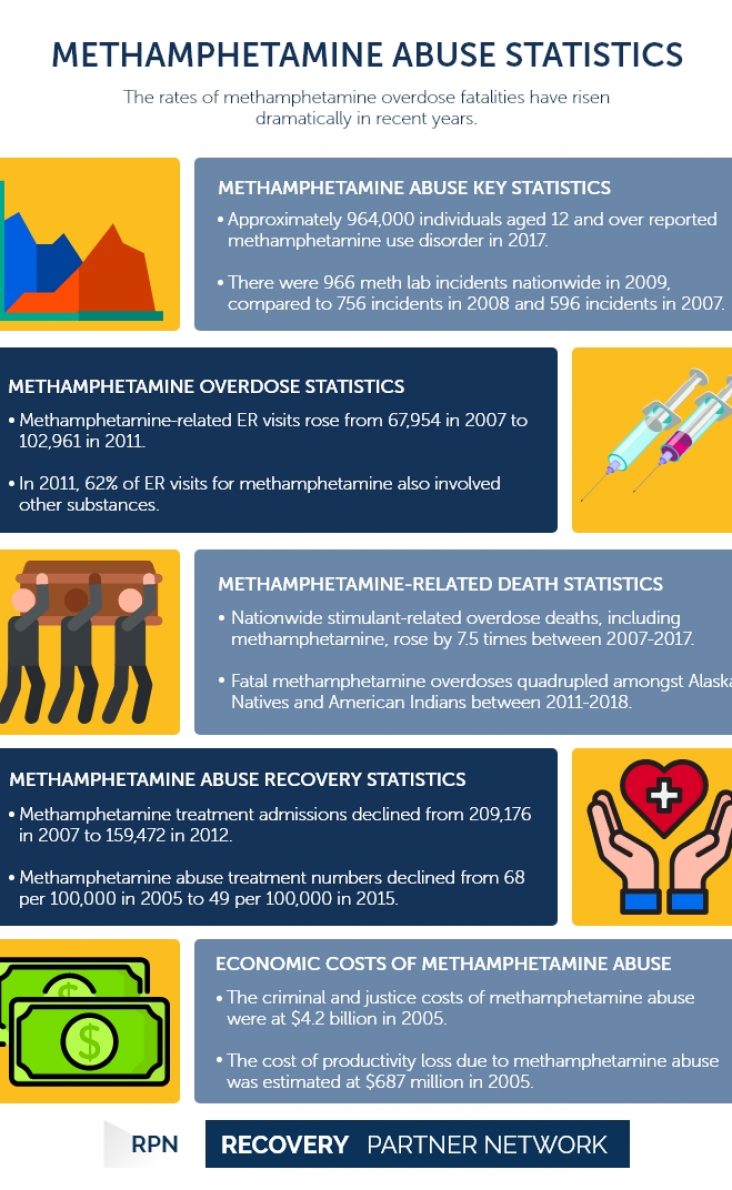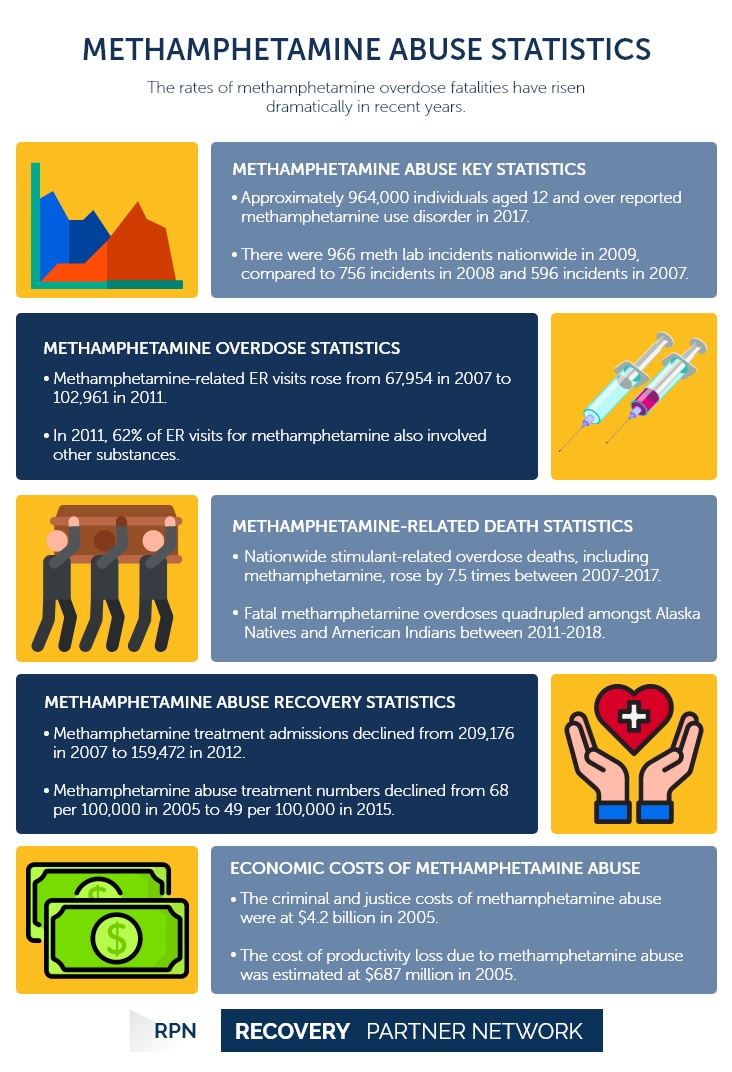The rates of methamphetamine overdose fatalities have risen dramatically in recent years.
Methamphetamine Abuse Statistics
Substance use disorder
- Alcohol abuse statistics
- Amphetamine abuse statistics
- Cannabis abuse statistics
- Cocaine abuse statistics
- Heroin abuse statistics
- Illicit drug abuse statistics
- Inhalant abuse statistics
- Methamphetamine abuse statistics
- Opioid abuse statistics
- Prescription Drug abuse statistics
- Tobacco abuse statistics
Methamphetamine abuse statistics | Table of Contents
Methamphetamine Abuse
Methamphetamine is an extremely addictive central nervous system stimulant that may be injected, smoked, snorted, or taken orally. Methamphetamine users feel a short yet powerful “rush” as the drug is initially ingested. Methamphetamine is one of the most commonly abused illicit drug in the United States. It is most popular in the Western and Midwestern states and is particularly common in the Pacific Northwest.
The immediate consequences of methamphetamine include elevated activity and reduced appetite. The drug has limited prescription applications for the management of narcolepsy, attention deficit disorders, and obesity. However, it is seldom administered by physicians. The rates of methamphetamine overdose fatalities have risen dramatically in recent years.
Methamphetamine Abuse Key Statistics
- As per the 2017 National Survey on Drug Use and Health (NSDUH), nearly 1.6 million individuals (0.6 percent of the population) recorded using methamphetamine in the past year, and 774,000 (0.3 percent) confirmed taking methamphetamine in the past month.
- An approximate 964,000 individuals aged 12 or over (about 0.4 percent of the population) reported methamphetamine use disorder in 2017.
- According to the Centers for Disease Control and Prevention (CDC), the 2018 Monitoring the Future (MTF) survey of adolescent substance usage and attitudes recorded that around 0.5 percent of 8th, 10th, and 12th graders used methamphetamine during the past year.
- Between 2015 to 2018, a total of 1.6 million US people 18 years and older reported methamphetamine consumption last year; 52.9 percent reported methamphetamine use disorder, and 22.3 percent confirmed methamphetamine injecting in the last year.
- Between 2015 to 2018, the approximate annual average prevalence of lifetime methamphetamine usage was 59.7 per 1,000 people or an average of 14,686,900 adults per year.
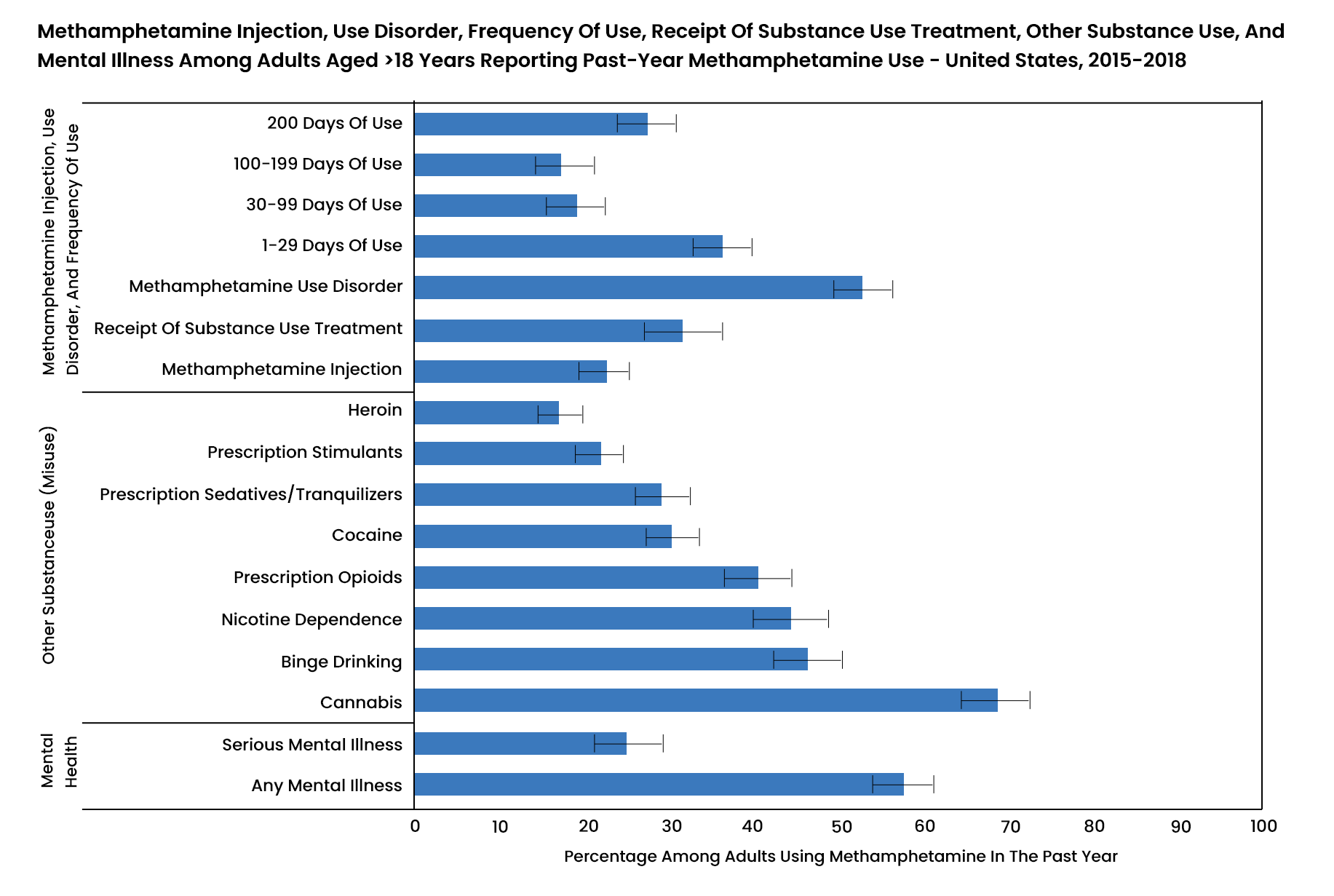
- There were 966 meth lab incidents nationwide in 2009, compared to 756 incidents in 2008 and 596 incidents in 2007.
- Meth lab incidents in Kentucky have significantly increased from 297 in 2007 to 696 in 2009.
- California has experienced an increase in “super” labs in recent years, from 10 in 2007 to 15 in 2008 and a slight decrease of 13 in 2009.
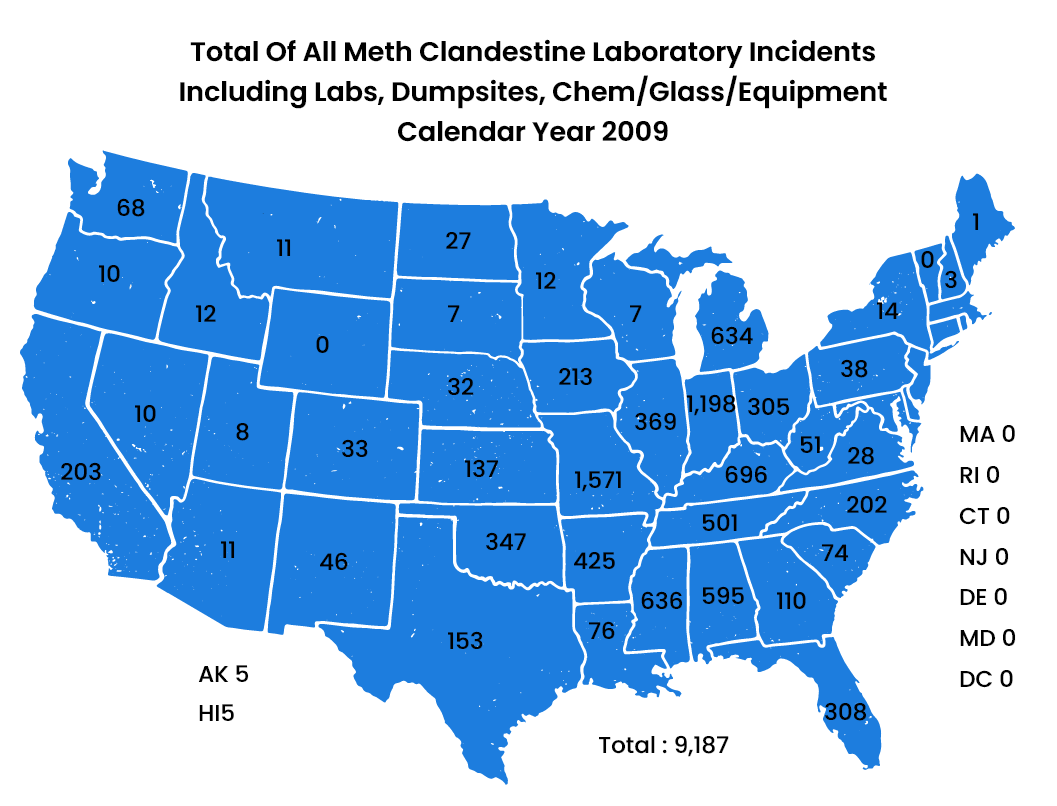
Methamphetamine Overdose Statistics
The methamphetamine crisis has been quietly but actively gaining steam during the past few years. With the increase in abuse rates across the US, the number of overdose cases has also risen. The majority of methamphetamine overdose cases were involved with polydrug abuse.
- As per SAMHSA 2014 The DAWN Report, the total number of methamphetamine-related ER visits increased from 67,954 in 2007 to 102,961 in 2011, with comparable trends observed for both males and females.
- In 2011, the majority (62 percent) of ER visits involving methamphetamine also involved other substances.
- Of all methamphetamine-related ER visits in 2011, approximately 6 in 10 (64 percent) of patients were treated and released.
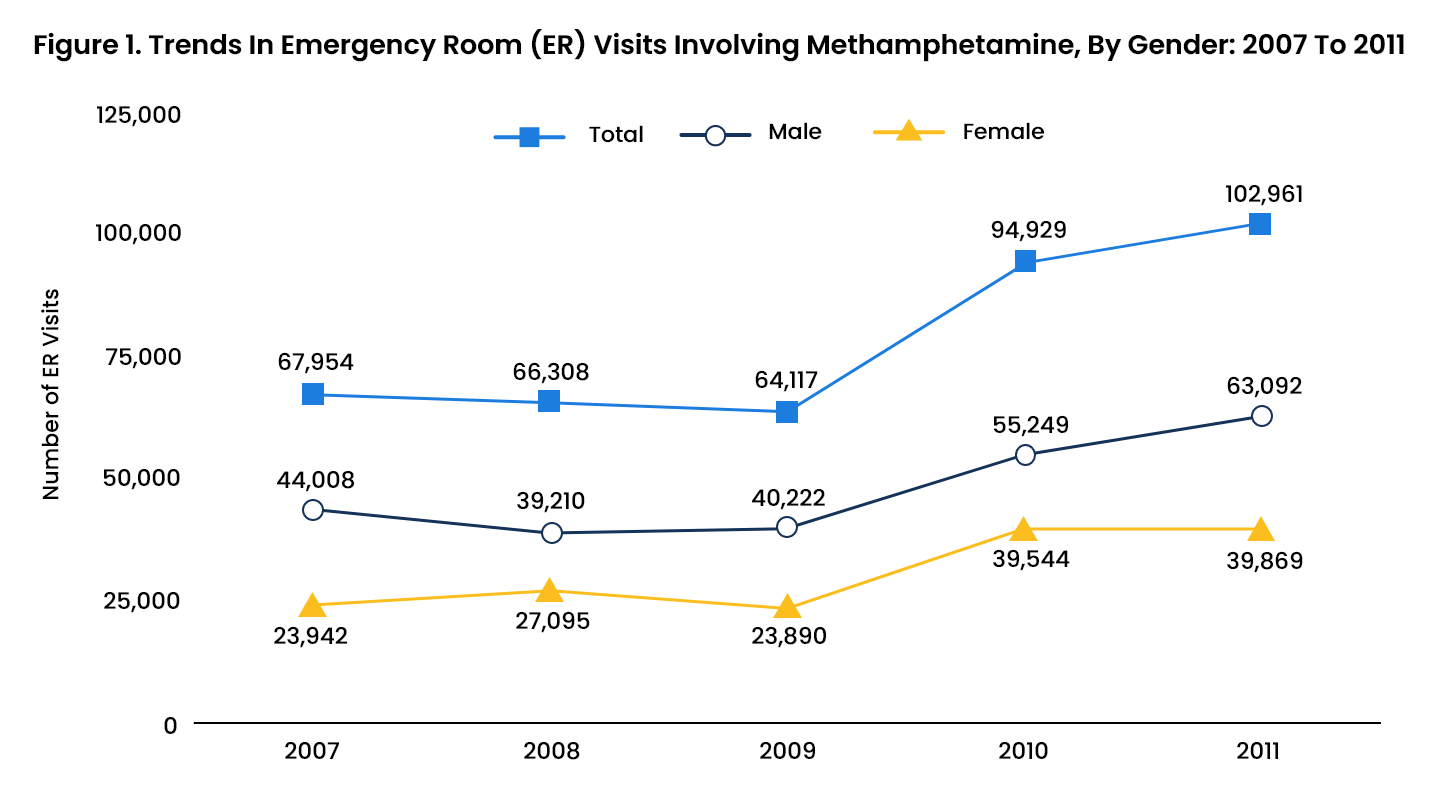
Methamphetamine-Related Death Statistics
The statistics related to fatal overdoses due to methamphetamine abuse are alarmingly high. Overdose deaths involving methamphetamine in people ages 25 to 54 have significantly increased in recent years, highlighting the severity of the methamphetamine crisis in the US.
According to the National Institute on Drug Abuse (NIDA):
- Fatal methamphetamine overdose cases more than quadrupled amongst Alaska Natives and American Indians between 2011 and 2018. In this category, the number of male deaths rose from nearly 6 to 26 per 100,000, and 4 to 16 per 100,000 among women.
- Nationwide overdose fatalities from this drug category, including methamphetamine, rose by 7.5 times between 2007 and 2017.
- Overall, fatal OD rates increased from less than 2 to 10 per 100,000 males and from 0.8 to 4.5 per 100,000 females—more than a five-fold rise to 201 in 2011.
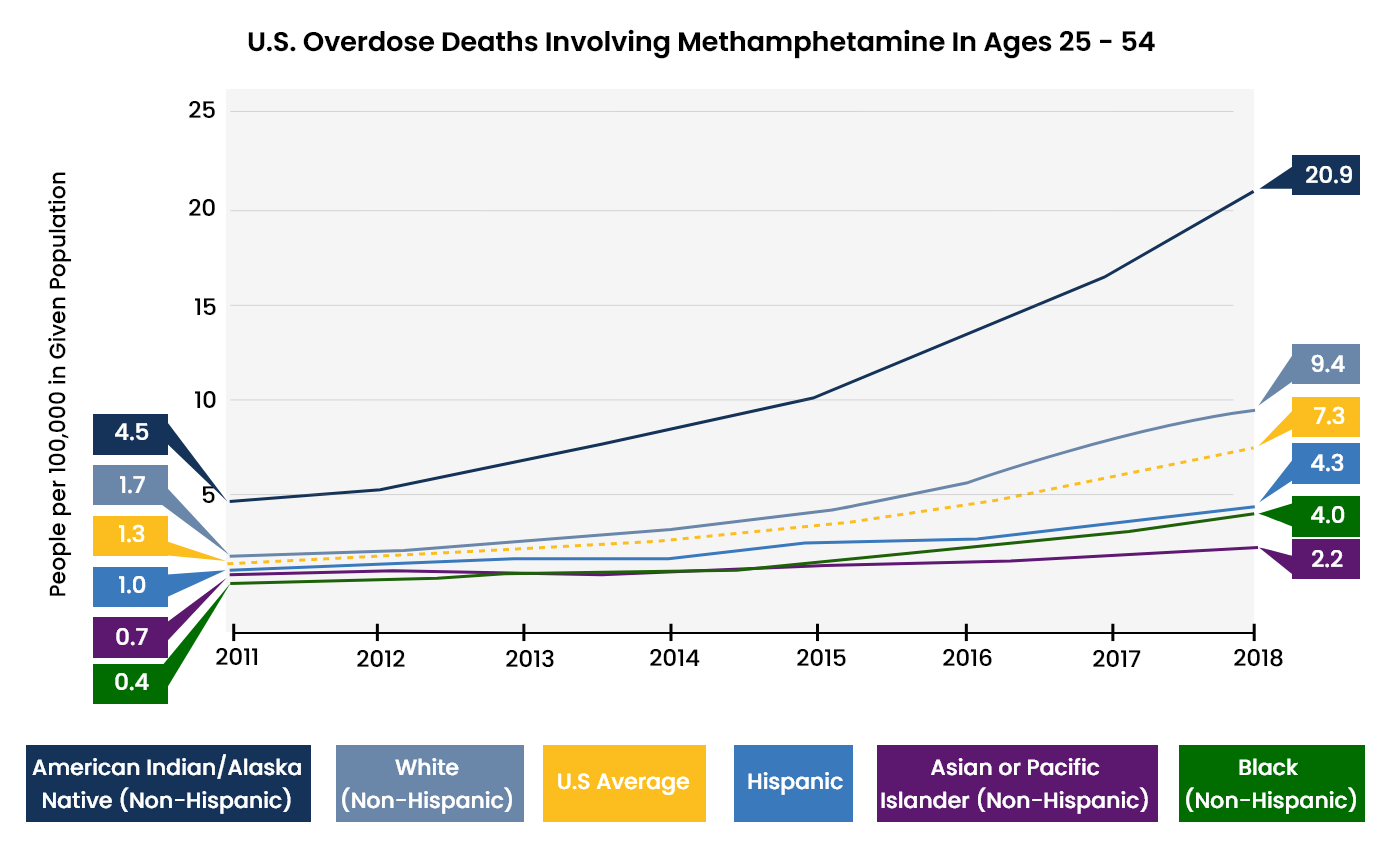
Methamphetamine Abuse Recovery Statistics
It is estimated that 1.6 million adults in the US use methamphetamine each year. Although half the individuals using methamphetamines met the diagnostic criteria for addiction, only one-third of them went on to receive treatment. This is highly concerning as high rates of co-occurring disorders or mental illness among adults is caused by methamphetamine abuse.
- According to SAMHSA, methamphetamine treatment admissions declined from 209,176 in 2007 to 159,472 in 2012.
- The number of treatment admissions then increased gradually during the next few years and peaked in 2017 by 229,336.
- National treatment admission numbers for methamphetamine abuse declined from 68 per 100,000 in 2005 to 49 per 100,000 in 2015.
- According to an independent study by Rand Corporation based on data from 2005, drug treatment costs were approximately $546 million, including $491 million for community-based specialty treatment.
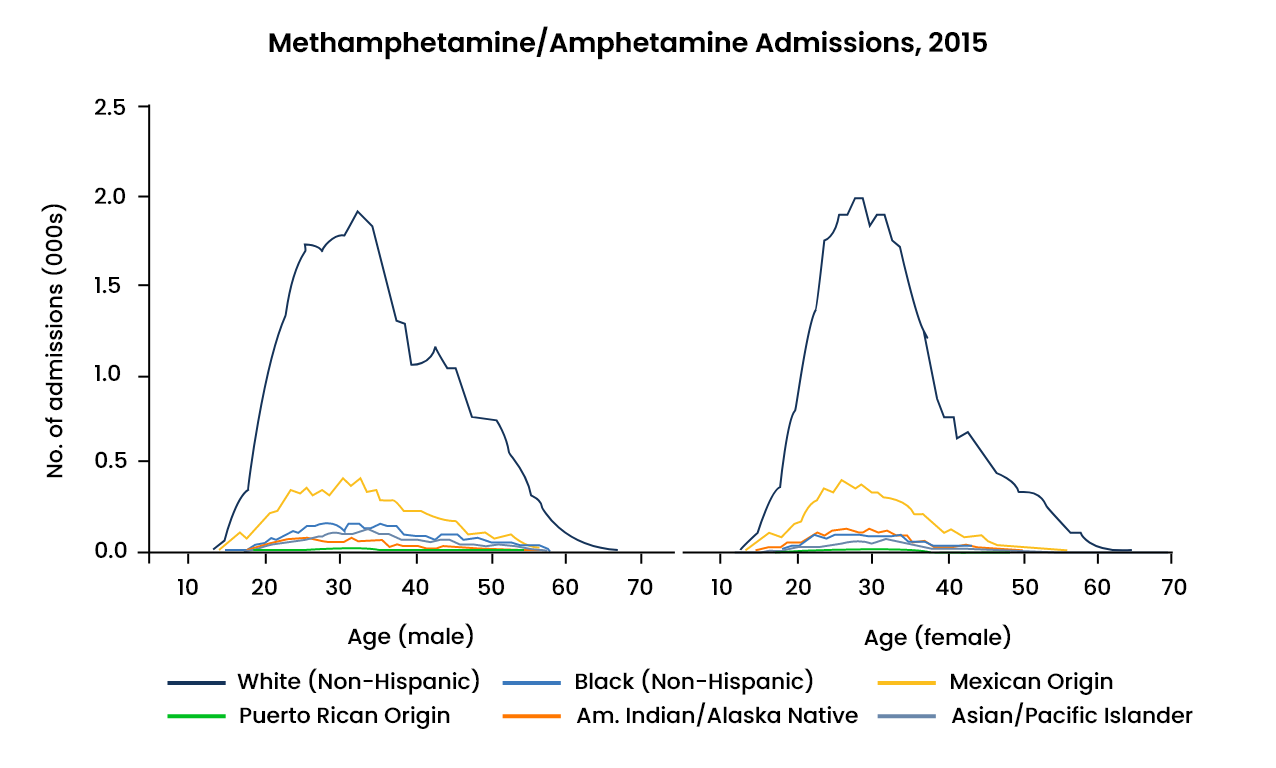
Economic Costs of Methamphetamine Abuse
Increasing rates of methamphetamine abuse cost the US billions of dollars each year. The economic cost of methamphetamine abuse is calculated through the overall cost of healthcare, loss of productivity, criminal justice costs, and premature death cost.
As per a 2005 study published by RAND Corporation:
- The estimated economic cost to society due to methamphetamine use was between $16.2 billion and $48.3 billion in 2005.
- About 70 percent of the expenses ($16.6 billion) originated from the intangible impact of addiction on dependent users, which was estimated at $12.6 billion, and premature mortality cost at $4 billion.
- The criminal and justice cost was estimated at $4.2 billion.
- The loss of productivity cost was estimated at $687 million.
- The potentially unique cost of meth was estimated at $61 million for harms and injuries associated with the production, $32 million of which come from injuries and deaths from hazardous-substance events, such as explosions and fires.
- Around $29 million of the production costs resulting from the cleanup of hazardous wastes at discovered laboratory facilities.
- The costs for child endangerment were estimated at $905 million, which includes foster care, medical care, and detrimental impacts on quality of life.
Recovery Partner Network
We aim to educate and empower. If you feel our library of resources does not cover your specific need, reach out to us, and we would be happy to help.
STATISTICS
© Copyright 2025

